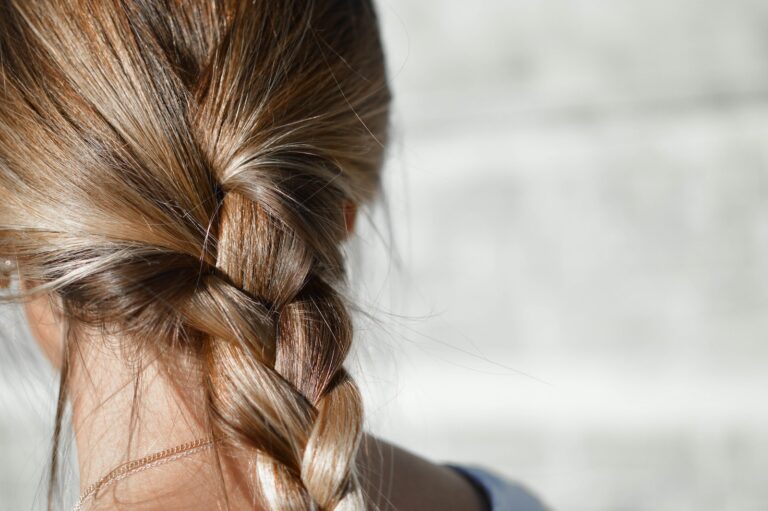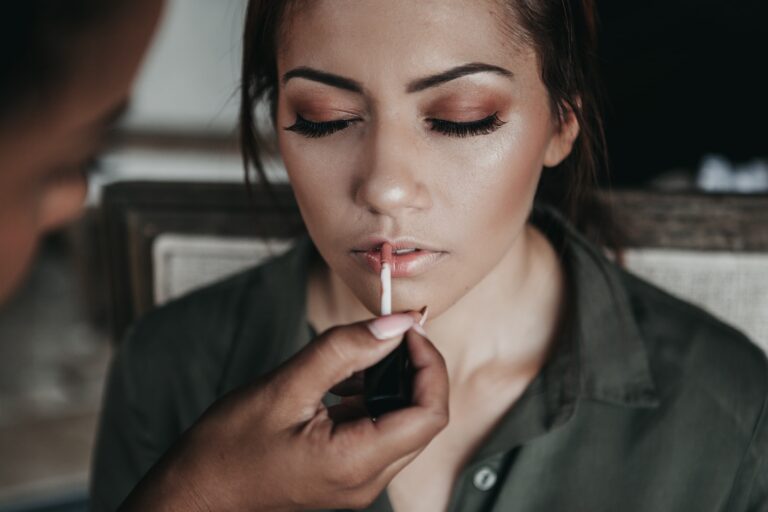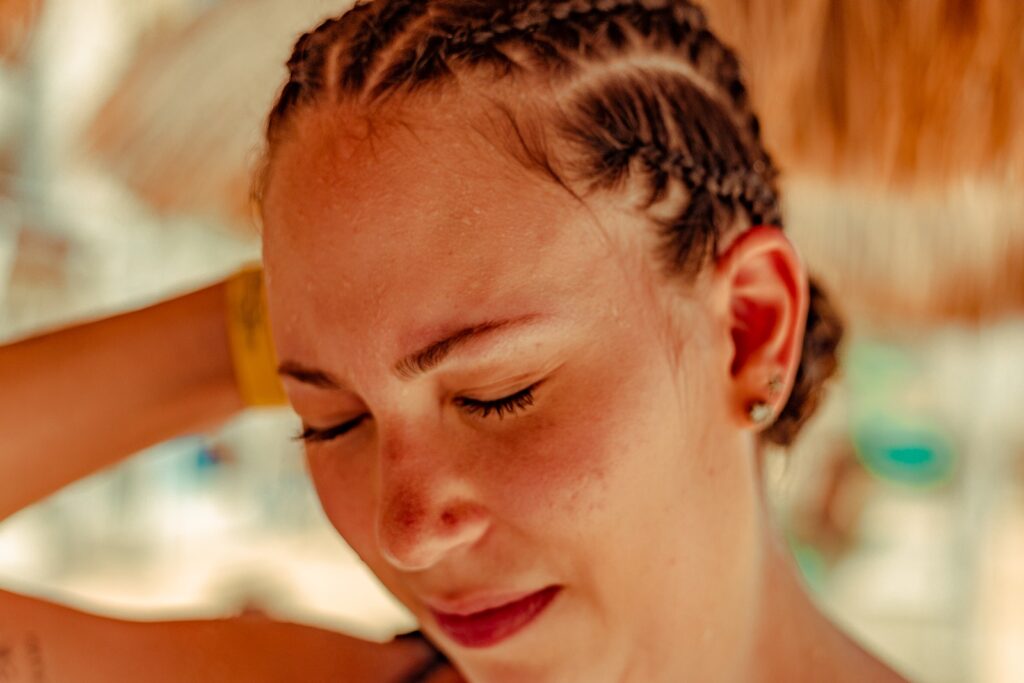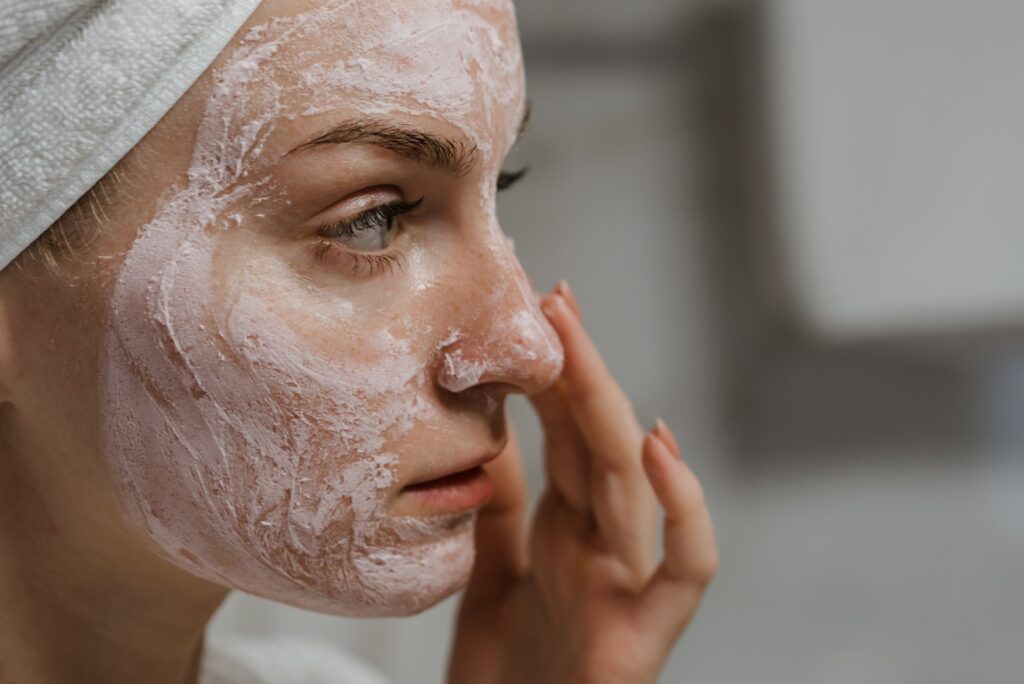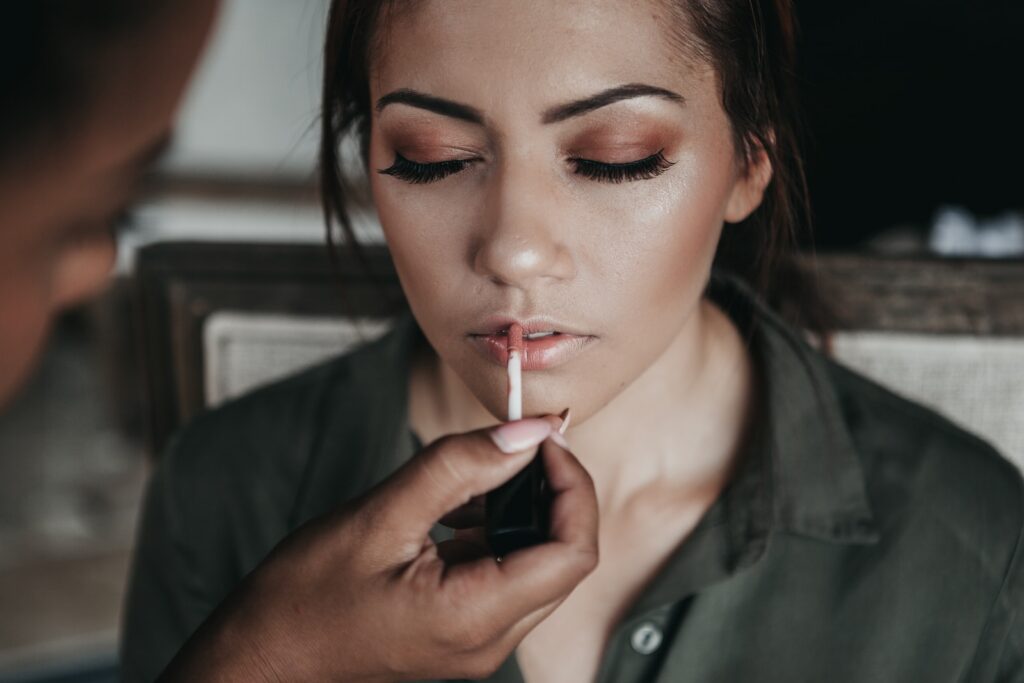Are you wondering how to compare a self tanning lotion vs. a sunless spray tan? You’re not alone. We all seek a gorgeous tan without the risks of UV exposure and skin damage. In this post, you’ll learn about the pros and cons of both methods, tailored for your skin type and tone. We’ll guide you through making the right choice for that perfect, safe tan, whether for a special occasion or to maintain a year-round glow. Dive in to uncover which sunless tanning solution aligns best with your needs and lifestyle.
This post may contain affiliate links. If you purchase through them, we may earn a small commission. Learn more about it here.
Understanding Sunless Tanners
Sunless tanners have revolutionized the way you can get that desired bronzed look without having to bake under the harmful rays of the sun. At their core, these products contain a safe, active ingredient called dihydroxyacetone (DHA). DHA is a simple carbohydrate that, when applied, causes a chemical reaction with the amino acids in the top layers of the skin. This reaction creates a pigment called melanoidin, which results in a darkening of the skin, simulating a tan.
Sunless tanners come in various formulations you can apply at home or via a spray or automated booth in a tanning or beauty salon. We will start with at home formulas, including cleaner ingredient product recommendations, move on to professional spray services and finish with some important health concerns and skin protection tips.
Choosing Your at-Home Formula: Self Tanning Lotion or Mousse
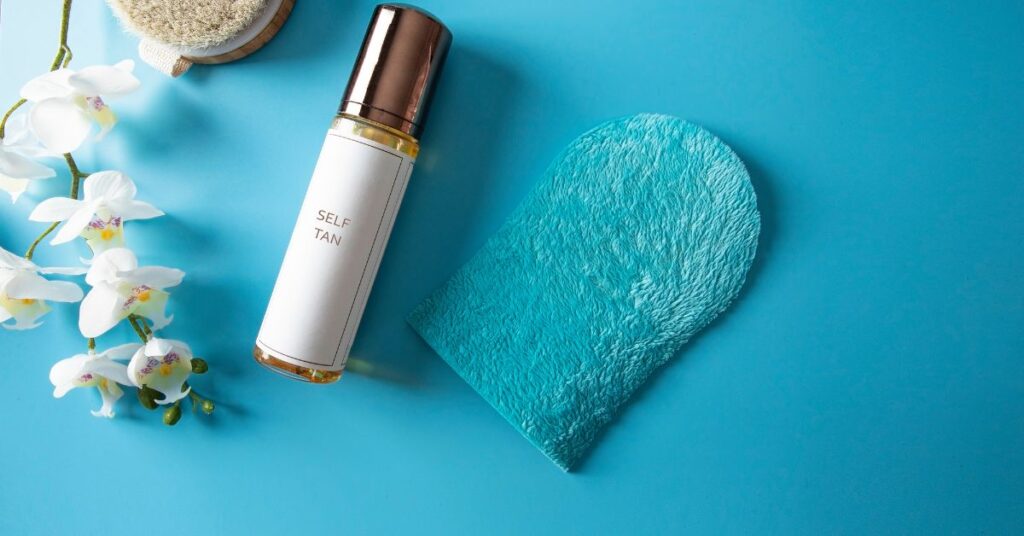

Two popular forms of self-tanners for home use are mousse and lotion. While both aim to give you that desired bronzed look, they differ in texture, application, and, sometimes, the final outcome. Understanding these differences can help you select the best option for your tanning needs and preferences.
Self-Tanning Mousse
- Texture: Mousses have a light, airy texture. They’re generally less greasy than lotions and are absorbed by the skin more quickly.
- Application: Mousse formulas are often easier to spread evenly, reducing the chances of streaks. This makes them a favorite for both beginners and seasoned self-tanners.
- Drying Time: Mousses dry faster than lotions, making them convenient for those short on time.
- Finish: Many users find that mousses provide a more intense color initially, which can be great for when you need a quick fake tan.
Self-Tanning Lotion
- Texture: Lotions are creamier and can provide more hydration, which benefits those with dry skin.
- Application: Lotions might take more effort to blend into the skin evenly but can offer a more controlled, gradual, buildable color.
- Drying Time: They usually require more time to dry, so you’ll need to wait a bit before dressing.
- Finish: Lotions often result in a more gradual tan, which develops over several hours or days.
Choosing What’s Right for You
- Skin Type: If you have dry skin, you might prefer the moisturizing benefits of a lotion. Oily skin or combination skin types might find a mousse lighter and more comfortable.
- Desired Outcome: For a quicker, more noticeable tan, a mousse might be the way to go.
- Skin Tone: If you have pale skin or you’re looking for a gradual change, a lotion could be your best bet.
- Experience Level: If you’re new to self-tanning, a mousse can be more forgiving with less application errors.
Both mousse and lotions have their own benefits, and the best choice ultimately depends on your personal needs, skin type, and the kind of tan you’re aiming for. Remember, no matter which you choose, proper skin preparation and application techniques are vital to achieving that flawless, sunless tan.
How to Use Sunless Self Tanner
While sunless tanners are generally easy to use, here are some tips to help you achieve that perfect at-home glow.
Preparing Your Skin for Sunless Tanner
- Exfoliation: Start by exfoliating your skin to remove dead skin cells, focusing on rough areas like knees, elbows, hand, and feet. Be sure to move in a circular motion to hit all spots and avoid dry spots and streaks that the tanner could adhere to. This step ensures an even base for your tan.
- Moisturizing Dry Areas: Before applying the tanner, lightly moisturize dry patches on your skin. A light layer of moisturizer on elbows, knees, and feet helps prevent the tanner from absorbing too much into these dryer areas, which can cause dark spots.
Application Technique
- Equipment: Use an applicator mitt (or rubber gloves) to avoid staining your palms.
- Application: Apply the lotion or mousse in smooth, circular motions. Start from your legs and work your way up to avoid creases in the tan from bending.
- Amount: Be conservative with the amount you apply to areas like knees, elbows, and ankles. These areas can absorb more product, leading to an uneven tan.
- Instructions: Always follow the specific product instructions for trouble free results.
Post-Application Care
- Drying Time: Allow the lotion to dry completely before getting dressed; this might take a few minutes to an hour.
- Avoid Water: Steer clear of water for at least the first few hours post-application.
- Regular Maintenance: Reapply every few days to maintain the tan and evenness.
Things to Remember
- Scent: Some lotions may have a noticeable unpleasant odor due to the DHA, though formulations have improved.
- Patch Test: Always conduct a patch test first to check for any allergic reactions.
Self-tanning lotion and mousse offer a practical, straightforward way to achieve a beautiful tan in the comfort of your own home. With attention to preparation and application, you can enjoy a natural-looking tan with a healthy glow, safe from sun exposure and without the risks of UV damage.
Recommended Cleaner Ingredient Self Tanners and Mitts
Eco Tan Cacao Tanning Mousse


This chocolate scented mousse is free from artificial orange dyes, synthetic ingredients and chemical smells.
Enriched with antioxidants and omega 3 fatty acids for a healthy glow.
Eco Tan is an Australian brand certified organic by the Organic Food Chain Australia, certified toxic free by Safe Cosmetics Australia and is cruelty free.
Chocolate Sun Tanning Cream


Chocolate Sun Tanning Cream is an 89% organic, hydrating formula that contains eco-certified DHA from organically grown sugar beets.
It is available in two scent, cocoa and sweet orange, and three color shades, light, medium and dark.
Beauty By Earth Self Tanner


This hydrating formula is made with natural, organic ingredients including shea butter, aloe and coconut oil.
It’s available in two shades and is made in the USA.
Coco & Eve Sunny Honey Bali Bronzing Foam


This hydrating, lightweight bronzing foam is made with 100% natural DHA, botanicals, amino acids and antioxidants.
It’s toxin free, ethically sourced, and Peta approved.
Skinerals Californium Sunless Tanning Mousse


This lightweight, fast drying foam contains aloe, acai berry, fig extract and vitamins A, C, and E.
It contains no parabens, sodium lauryl sulfates or artificial dyes and is vegan, gluten and cruelty free.
Eco Tan Double Sided Tanning Mitt


This double sided applicator mitt can be used with cream, mousse or tanning water.
Made from natural and recyclable fabric and materials.
Sunless Spray Tans


Moving from self tanning lotion to professional services, sunless spray tans offer an alternative that is convenient and practical for achieving an entire body perfect tan.
What are Sunless Spray Tans?
Sunless spray tans are typically administered in a tanning or beauty salon by a professional, using a spray gun or in an automated spray booth that evenly coats the body with a tanning solution. The key ingredient in these solutions is usually the same DHA found in self-tanning lotions and mousse, which reacts with your skin to create a tanned appearance.
Benefits of Professional Spray Tans
- Even Coverage: One of the primary advantages is the even coverage. Professionals are trained to apply the product uniformly, avoiding streaks and patches that can occur with home applications.
- Quick and Convenient: Getting a spray tan is relatively fast, usually taking 15 to 30 minutes for the entire process. It’s an excellent option for those needing a last-minute tan for a special event.
- Customization: Professional spray tans often allow for more customization. Technicians can adjust the shade to match your desired level of tanness and consider your natural skin tone for the most flattering results. Tan artists can contour the body with strategically placed tanner using a handheld device.
Considerations and Cons of Spray Tans
- Cost: Professional spray tans are generally more expensive than at-home options, which can add up if you prefer regular sessions.
- Maintenance: Like other sunless tanning methods, spray tans fade over time. Frequent visits will be required to maintain your tan.
- Safety Measures: It’s essential to protect your eyes, lips, and other sensitive areas during application. Ensure the salon provides proper safety equipment like eye covers and lip balm.
Getting the Best Results from Spray Tans
- Preparation: Exfoliate and moisturize your skin beforehand, focusing on dry areas. Avoid wearing makeup, deodorant, or perfume during your appointment.
- Post-Tan Care: Wear loose, dark clothing after your session to avoid rubbing off the tan. Wait for the recommended time (usually a few hours) before showering or sweating.
- Hydration: After washing off the tanner, keep your skin hydrated to prolong the life of your tan.
Sunless spray tans offer a hassle-free and professional way to achieve a natural tan, ideal for those special occasions or when you need a quick tan without the wait.
Health and Safety Considerations of Sunless Tanners
When considering sunless tanning, it’s vital to weigh the health and safety aspects. Understanding the risks associated with traditional tanning methods, like sunbathing or tanning beds, and the ingredients in sunless tanning products can guide you to make a safer, more informed decision.
Dangers of UV Tanning
- Skin Cancer: Prolonged exposure to UV rays from the sun or a tanning bed significantly increases the risk of skin cancer, including melanoma, the deadliest form.
- Premature Aging: UV light can lead to premature aging, causing wrinkles, leathery skin, and sunspots.
- Skin Damage: Overexposure to UV rays can also lead to sunburns and, in the long term, weaken the skin, making it more prone to bruising and damage.
Safer Alternatives
Sunless tanning products, including lotions, mousse, and sprays, provide a safer alternative by eliminating the need for harmful UV exposure. However, it’s crucial to consider the following:
- Non-Toxic Ingredients: Choose products with non-toxic and skin-friendly ingredients. Dihydroxyacetone (DHA), the active ingredient in self tanning lotion, mousse and spray, is generally considered safe for external.
- However, some studies have shown that DHA can cause an increase in free radicals in the skin, which can lead to DNA damage. The risk of DNA damage is higher when DHA penetrates cells underlying the stratum corneum (top layer of the skin) in a time- and dose-dependent manner.
- The Scientific Committee on Consumer Safety (SCCS) evaluated the safety of dihydroxyacetone (DHA) as a self-tanning ingredient in cosmetic products. The SCCS concluded that DHA is safe when used in self-tanning cosmetic products up to a maximum concentration of 10%. The SCCS also stated that the use of DHA in spray cabins up to a maximum concentration of 14% is safe.
- Skin Sensitivities: If you have sensitive skin, do a patch test before using new products. Look out for formulations designed for sensitive skin types to reduce the risk of irritation.
- Environmental Factors: Opt for environmentally friendly options. Some sunless tanners, like the ones recommended above, contain organic and natural ingredients, reducing your environmental footprint.
Safety in Spray Tanning
- Inhalation Risks: In professional spray tan booths, there’s a risk of inhaling the mist, which may contain DHA and other chemicals. Inhaling these substances is a concern since the long-term health effects are not fully understood.
- Protective Measures: To mitigate inhalation risks, it’s important to use protective gear during the application and ensure that the spray tan automated booth is well-ventilated.
Understanding Sun Protection with Sunless Tanners
While sunless tanners like DHA-based products offer a safer alternative to achieve that sought-after bronze glow without the risks associated with UV exposure from sunbathing or tanning beds, it’s crucial to address a common misconception: sunless tanners do not provide sun protection.
Why Sunscreen is Still a Must
Even though you might look sun-kissed and radiant after using a self-tanner, your skin remains just as susceptible to the harmful effects of ultraviolet (UV) rays from the sun. This exposure can increase the risk of skin damage, including premature aging (like wrinkles and age spots) and raise the risk of skin cancer.
The Science Behind It
The darkening effect of DHA in self-tanners is purely cosmetic. The tan achieved is a result of a chemical reaction in the top layer of the skin and doesn’t involve the skin’s melanin, which can provide some protection against UV rays. Since there’s no actual increase in melanin, your skin’s natural defense against UV radiation isn’t enhanced.
Choosing the Right Sunscreen
When selecting a sunscreen to use with your sunless tanner:
- Broad-Spectrum Protection: Look for products that offer broad-spectrum protection, guarding against both UVA and UVB rays.
- SPF Rating: Choose a sunscreen with an SPF of 30 or higher for effective protection.
- Water Resistance: If you’re swimming or sweating, consider a water-resistant formula.
- Application: Apply sunscreen generously and evenly to all exposed areas of skin. Remember, sunscreen should be reapplied every two hours, or more often if you’re swimming or sweating.
Enjoying a sunless tan is a great way to look like you’ve spent time in the sun without the risks associated with actual sun exposure. However, it’s vital to continue practicing safe sun habits. Use a broad-spectrum sunscreen, wear protective clothing, and seek shade during peak sun hours. This way, you get the best of both worlds: a gorgeous tan and well-protected, healthy skin.
Self Tanning Lotion vs. Spray
Sunless tanning offers an environmentally friendly, skin-safe way to achieve that sun-kissed glow, bypassing the harmful effects of UV rays. When it comes down to self tanning lotion vs. spray, each method carries its own set of pros and cons to consider, especially when thinking about ingredients and application ease. The best self-tanner is the one that feels right for you and your skin, aligning with a conscious, non-toxic, earth-friendly lifestyle.
Related Posts:
Best Eco-Friendly Deodorant: What You Need To Know
5 Toxic Skincare Ingredients to Avoid for a Sustainable Glow-Up
15 Healthy Home Swaps & Tips For Natural Non-Toxic Living
You Might Also Like:
Does Cruelty-Free Mean Vegan? What You Need To Know
Rosemary Oil: Your Secret Weapon for Tackling Hair Loss
9 Sustainable Ways to Stay Cool in Extreme Heat
How to Easily Tell Which Fashion Brands Are Ethical and Sustainable
Latte Makeup Trend: Sip, Slay, and Save the Planet!
Best Natural Toothpaste Alternatives For Sparkling Teeth
Are you on the lookout for a more natural way to keep your smile bright and your…


